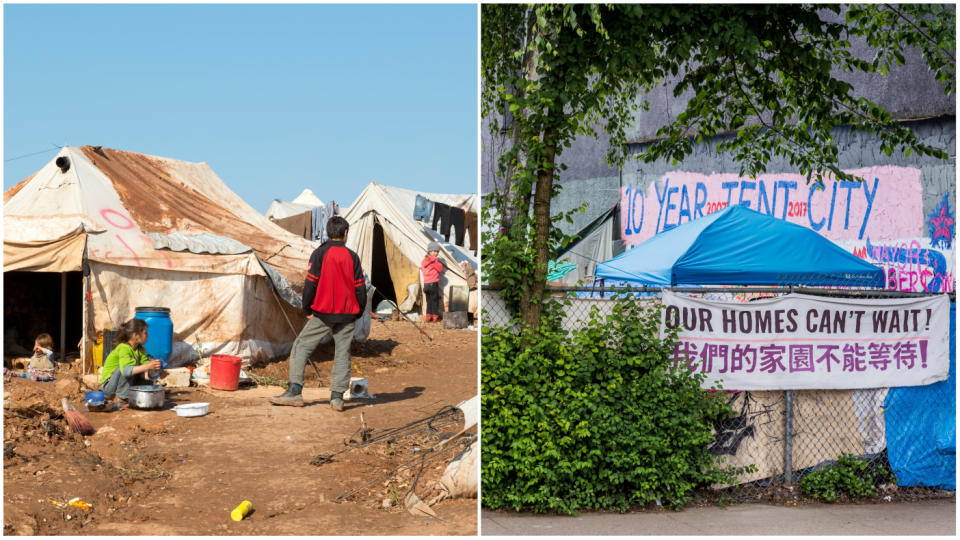Should Canada be spending more money on aid at home or abroad?

Here’s a moral conundrum: You have $1,000 to spend helping someone in need. Do you spend it on someone in your family? Do you spend it on someone on the other side of town who needs it more desperately? Do you try and do both?
Canada is the ninth biggest contributor to foreign aid out of the world’s top 29 donor countries. It could be higher on the list, but is that what Canadians want?
The country earned its ninth-place spot by spending $4.28 billion on foreign development aid in 2017. That amount makes up only 0.26 per cent of Canada’s gross national income in 2017, and falls well short of the United Nations aid spending target of 0.7 per cent.
But a study suggests three out of four Canadians would say that’s fine.
In March 2018, the Angus Reid Institute found while two-thirds of Canadians say their country is morally obligated to help abroad, only 28 per cent of us think the country should increase spending on foreign aid.
This feeling persisted even after those surveyed were informed Canada’s foreign aid spending lags behind other countries and falls short of the UN’s target of 0.7 per cent of gross national income. In fact, the study found close to one-in-five Canadians falsely believe Canada spends more than the UN target.
As for helping people closer to home, the Angus Reid institute asked Canadians this spring about America’s Deferred Action for Childhood Arrivals (DACA). This was the program under former U.S. president Barack Obama that allowed some 800,000 undocumented immigrants brought to the U.S. as children to remain there legally.
The study found while most Canadians say U.S. President Donald Trump should not have ended DACA, 34 per cent of Canadians surveyed said they feel Canada should not offer DACA recipients who are losing their legal status in the U.S. an opportunity to come here.
“Canadians’ views on this question vary significantly depending on their familiarity with the DACA program, their age, and their political leanings,” the Angus Reid Institute said. It pointed out that the people who followed news about the DACA program most closely were the most likely to say Canada should invite DACA recipients to come here.
With poverty an issue in Canada, people sometimes argue the federal government should focus on fixing Canada’s problems before trying to help people in other countries.
One third of those surveyed by Angus Reid said having less money to spend on solving Canada’s own problems was a negative aspect of international development spending. Another 16 per cent said Canada can’t afford to spend money helping other countries.
But the numbers show Canada doesn’t spend nearly as much to solve problems abroad as it does to solve domestic issues.
Here at home, iPolitics reports the federal government’s budget for 2018 includes spending an additional $173.2 million on refugee resettlement and processing in order to help border officials respond to the wave of asylum seekers entering Canada across our boundary with the U.S. The federal government also earmarked $20.3 million over five years to resettle 1,000 vulnerable refugee women and girls as government-assisted refugees.
In comparison, the same budget promises $600 million over three years for on-reserve housing for Canada’s Indigenous peoples, $400 million over 10 years for housing in the Inuit regions of Nunavik, Nunatsiavut, and Inuvialuit, along with $500 million over 10 years for housing for Métis people.
The federal government pledges to expand the Working Income Tax Benefit by an additional $500 million annually, and promises an increase in loans provided via the Rental Constructive Financing Initiative over the new three years from $2.5 billion to $3.75 billion.
Those are some of the numbers painting a picture of what Canada is spending to help people at home and abroad.
What do you think? Should Canada have a clear priority in terms of assisting people wherever assistance is needed, or focusing on helping people here first?
Let us know by answering the poll above, or have your say in the comments below.

